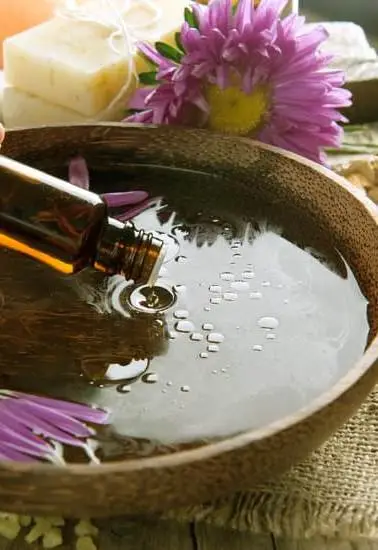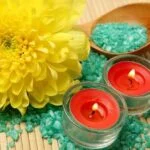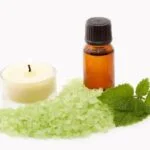Aromatherapy, a holistic healing practice that utilizes the power of essential oils, has gained widespread popularity in recent years. These aromatic oils, known as aromatherapy grade essential oils, are the foundation of this practice and play a crucial role in promoting physical and emotional well-being. In this article, we will explore what exactly distinguishes aromatherapy grade essential oils from regular essential oils and why they are so important in the field of aromatherapy.
Aromatherapy is an ancient healing art that dates back thousands of years. It involves the use of plant extracts, specifically concentrated essential oils, to improve various aspects of health and wellness. These oils are derived from different parts of aromatic plants, such as flowers, leaves, bark, or roots, and possess distinct therapeutic properties.
However, not all essential oils are created equal. Aromatherapy grade essential oils are carefully selected and produced with the highest standards to ensure their purity and quality. They undergo specific distillation processes that retain the maximum therapeutic compounds found in the plant material. This level of attention to detail sets them apart from regular essential oils commonly found in beauty products or air fresheners.
Using aromatherapy grade essential oils is integral to experiencing the full benefits of aromatherapy. Their purity allows for optimal absorption by our bodies through inhalation or topical application. Additionally, these oils contain potent chemical constituents that can positively influence our emotions and physical well-being. In the sections that follow, we will delve deeper into the origins of aromatherapy grade essential oils and what makes them so unique compared to other types of essential oils available on the market today.
The Origins of Aromatherapy Grade Essential Oils
Aromatherapy is an ancient practice that has been used for centuries to promote physical and emotional well-being. The origins of aromatherapy can be traced back to ancient civilizations such as Egypt, China, and India, where aromatic substances were used for medicinal and spiritual purposes. Over time, the use of essential oils in aromatherapy has evolved, leading to the classification of certain essential oils as “aromatherapy grade”.
In ancient Egypt, essential oils were highly valued and were often used in religious ceremonies and medicinal treatments. The Egyptians believed that these aromatic substances had powerful healing properties and could balance the body, mind, and spirit. Similarly, in China, essential oils were used in traditional medicine to treat various ailments and promote overall health.
The modern practice of aromatherapy gained prominence in the early 20th century when French chemist René-Maurice Gattefossé coined the term “aromatherapy” after experiencing the healing effects of lavender oil on burns. This sparked further research into the therapeutic benefits of essential oils and their application in healthcare settings.
As interest in aromatherapy grew, so did the need for standardized quality control measures. Thus, the concept of “aromatherapy grade” essential oils emerged. Aromatherapy grade essential oils are those that meet specific criteria regarding their purity, quality standards, and production methods. These criteria vary depending on different organizations or certifications that have been established to regulate the quality of essential oils.
One such organization is the International Organization for Standardization (ISO), which sets guidelines for the production and testing of essential oils to ensure their safety and efficacy. Another widely recognized certification is provided by the National Association for Holistic Aromatherapy (NAHA), which promotes education about aromatherapy practices and advocates for high-quality products.
To summarize this section: The origins of aromatherapy can be traced back to ancient civilizations where aromatic substances were used for medicinal and spiritual purposes. The modern practice of aromatherapy gained prominence in the early 20th century, leading to the classification of certain essential oils as “aromatherapy grade.”
These oils meet specific criteria regarding purity, quality standards, and production methods set by organizations such as ISO and NAHA. Next, we will explore what sets aromatherapy grade essential oils apart from regular essential oils.
| Characteristic | Description |
|---|---|
| Purity | Aromatherapy grade essential oils are pure, meaning they do not contain any synthetic additives or impurities. They are made solely from natural plant materials. |
| Quality Standards | These essential oils meet specific quality control measures established by organizations or certifications that regulate their production, ensuring consistency and efficacy. |
| Distillation Process | Aromatherapy grade essential oils are often distilled using methods that preserve the integrity of the plant’s beneficial compounds, resulting in potent and therapeutic oils. |
What Sets Aromatherapy Grade Essential Oils Apart
Aromatherapy grade essential oils are distinct from regular essential oils due to several key characteristics. These characteristics include purity, quality standards, and the distillation process. Understanding these differences is essential when it comes to choosing the right essential oil for aromatherapy purposes.
Purity is a fundamental characteristic of aromatherapy grade essential oils. To be considered aromatherapy grade, the oil must be unadulterated and free from synthetic additives or contaminants. This ensures that the oil retains its natural therapeutic properties and provides optimal benefits during aromatherapy sessions. High-quality aromatherapy grade essential oils go through rigorous testing to guarantee their purity before reaching the consumer.
In addition to purity, quality standards play a crucial role in differentiating aromatherapy grade essential oils from regular ones. Aromatherapy grade oils adhere to strict standards set by organizations such as the International Organization for Standardization (ISO) or specific certification bodies like the National Association for Holistic Aromatherapy (NAHA). These standards ensure consistent quality and authenticity in terms of sourcing, production methods, labeling, and packaging. By following these guidelines, manufacturers can maintain high-quality products that meet consumers’ expectations.
The distillation process is another significant factor that sets apart aromatherapy grade essential oils. Aromatherapists emphasize using oils derived from steam distillation or cold-press extraction methods rather than those produced through chemical solvents or heat-intensive processes. Steam distillation allows for the extraction of pure essential oil without damaging its delicate components and therapeutic properties.
Cold-press extraction is commonly used for citrus fruits, preserving their fragrance and vitality. By prioritizing these gentle extraction methods, aromatherapy grade essential oils offer a higher level of effectiveness in promoting physical and emotional well-being.
In summary, what sets aromatherapy grade essential oils apart from regular ones is their purity, adherence to quality standards, and the use of gentle extraction methods. These oils are carefully produced to maintain their natural therapeutic properties and are ideal for use in aromatherapy. By choosing aromatherapy grade essential oils, individuals can ensure they are getting a high-quality product that will provide the intended benefits during their aromatherapy sessions.
The Importance of Purity in Aromatherapy Grade Essential Oils
Aromatherapy grade essential oils are valued for their purity, as this is a crucial factor that contributes to their effectiveness in aromatherapy. The purity of essential oils refers to the absence of contaminants or adulterants, ensuring that the oil contains only the beneficial compounds derived from plants. This purity is achieved through careful sourcing, manufacturing, and testing processes.
One of the main reasons why purity is important in aromatherapy grade essential oils is because it ensures that the oil retains its therapeutic properties. When essential oils are pure, they contain a high concentration of the active compounds responsible for their specific benefits.
For example, lavender essential oil is known for its calming and relaxing effects due to its high content of linalool and linalyl acetate. If an oil is not pure and contains contaminants or dilutions, it may not possess these therapeutic properties or provide the desired benefits.
In addition to maintaining their therapeutic properties, pure aromatherapy grade essential oils also minimize the risk of adverse reactions or sensitivities. Contaminants or adulterants can introduce unknown substances into the oil that may cause skin irritation or other adverse effects when applied topically or inhaled. Aromatherapists and individuals using these oils for personal use rely on purity to ensure safe and effective application.
To ensure purity in aromatherapy grade essential oils, reputable brands and suppliers adhere to rigorous quality control standards. This includes thorough testing methods such as gas chromatography-mass spectrometry (GC-MS), which helps identify any impurities present in the oil. By sourcing from trusted suppliers who prioritize purity, individuals can maximize the therapeutic benefits and safety of using aromatherapy grade essential oils in their daily routines.
The Standardization of Aromatherapy Grade Essential Oils
Aromatherapy grade essential oils are held to a high standard of quality and consistency. This is largely due to the efforts of various organizations or certifications that have been established to ensure that these oils meet specific criteria. These organizations play a crucial role in maintaining the standards for aromatherapy grade essential oils, guaranteeing their effectiveness and safety for use in aromatherapy practices.
One notable organization that sets the standards for aromatherapy grade essential oils is the International Organization for Standardization (ISO). The ISO has developed guidelines and standards for essential oils, including those used in aromatherapy. Their rigorous testing processes help ensure that aromatherapy grade essential oils meet specific criteria related to purity, potency, and quality. When purchasing essential oils, look for those that have been ISO certified to ensure you are getting a product that meets these strict standards.
Another important certification to look out for is the National Association of Holistic Aromatherapy (NAHA) certification. NAHA offers a certification program that ensures individuals working with essential oils have received proper training and education regarding safety, ethical practices, and quality control measures. When purchasing aromatherapy grade essential oils, check if they carry the NAHA certification as an additional indication of their credibility and adherence to industry standards.
In addition to ISO and NAHA certifications, some reputable brands also conduct third-party testing or hold specific certifications from recognized organizations such as USDA Organic or Ecocert. These certifications further validate the quality and purity of aromatherapy grade essential oils. It is advisable to research different brands and verify if they possess any relevant certifications before making a purchase.
By establishing and maintaining these standards through organizations and certifications like ISO, NAHA, USDA Organic, Ecocert, consumers can feel confident about the consistency and quality of the aromatherapy grade essential oils they choose to incorporate into their wellness routines. These certifications not only ensure the effectiveness and safety of the oils but also promote transparency within the industry, giving consumers the assurance that they are using products that meet high-quality standards.
Common Applications and Benefits of Aromatherapy Grade Essential Oils
Aromatherapy grade essential oils have a wide range of applications and benefits, making them a versatile tool for improving both physical and emotional well-being. One of the most common uses of these oils is for stress relief.
Certain essential oils such as lavender, chamomile, and bergamot are known for their calming properties and can help reduce feelings of anxiety and promote relaxation. These oils can be diffused in the air, added to a warm bath, or applied topically with a carrier oil to experience their soothing effects.
In addition to stress relief, aromatherapy grade essential oils can also be used for relaxation purposes. Oils such as ylang-ylang, clary sage, and sandalwood have been traditionally used to induce feelings of calmness and tranquility. Incorporating these oils into a bedtime routine by diffusing them in the bedroom or applying them to pulse points can help promote a restful night’s sleep.
Pain management is another area where aromatherapy grade essential oils can be beneficial. Many individuals use oils such as peppermint, eucalyptus, and rosemary for their analgesic and anti-inflammatory properties. These oils can be diluted in a carrier oil and massaged onto sore muscles or added to a warm compress to alleviate pain.
Skincare is yet another popular application for aromatherapy grade essential oils. Oils like tea tree, lavender, rosehip, and frankincense are known for their skin-nourishing properties and ability to improve various skin conditions. They can be combined with carrier oils or added to skincare products such as lotions or serums to enhance their effectiveness.
Overall, aromatherapy grade essential oils offer numerous benefits across different areas of health and wellness. From stress relief and relaxation to pain management and skincare, these oils provide natural alternatives for promoting overall well-being. However, it is important to note that everyone’s response to essential oils may vary, and it’s always advisable to consult a healthcare professional or certified aromatherapist before using them for specific purposes.
Safety Considerations and Precautions
Dilution Ratios
When using aromatherapy grade essential oils, it is crucial to dilute them properly before application. Essential oils are highly concentrated and can cause skin irritation or other adverse reactions if used undiluted. The most common way to dilute essential oils is by mixing them with a carrier oil, such as almond oil or jojoba oil.
The general rule of thumb for dilution ratios is 2-3 drops of essential oil per teaspoon (5 ml) of carrier oil for adults. However, it is important to note that some oils may require further dilution depending on their potency.
Potential Allergies
Before using any aromatherapy grade essential oil, it is essential to be aware of potential allergies. Some individuals may have sensitivities or allergic reactions to specific oils, which can manifest as skin irritation, redness, itching, or respiratory issues.
It is advised to perform a patch test before incorporating a new essential oil into your routine. Apply a small amount of diluted oil onto a small area of skin (such as the inner arm) and observe for any adverse reactions for 24 hours.
Precautions for Specific Populations
Certain populations, such as pregnant women, children, or individuals with certain medical conditions, need to take extra precautions when using aromatherapy grade essential oils. Pregnant women should consult with their healthcare provider before using any essential oil due to the risk of contraindications or potential effects on the fetus.
Children also require special care and should use lower dilutions and certain oils should be avoided altogether. Similarly, individuals with specific medical conditions such as asthma or epilepsy should seek guidance from a healthcare professional before using certain essential oils.
It is always recommended to educate oneself about each specific essential oil being used and familiarize oneself with any safety concerns associated with it. Additionally, consulting with a certified aromatherapist or healthcare provider can provide personalized guidance and ensure the safe use of aromatherapy grade essential oils for optimal health benefits.
Where to Find Aromatherapy Grade Essential Oils
When it comes to finding aromatherapy grade essential oils, it is important to source them from reputable suppliers that prioritize quality and purity. With the increasing popularity of aromatherapy, there are numerous options available both online and in local stores. However, not all suppliers adhere to the same standards of quality. It is crucial to do thorough research and choose trusted sources when purchasing aromatherapy grade essential oils.
Online retailers have become a convenient option for purchasing aromatherapy grade essential oils. These retailers provide a wide range of options, allowing customers to choose from various brands and oil types. Some popular online retailers for high-quality aromatherapy grade essential oils include:
- Plant Therapy: Known for their rigorous testing procedures and commitment to providing pure essential oils.
- Rocky Mountain Oils: Offers a wide range of organic and sustainably sourced essential oils.
- Aura Cacia: Provides affordable options without compromising on quality.
Local stores such as health food stores or specialty shops may also carry aromatherapy grade essential oils. These stores often have knowledgeable staff who can provide guidance on selecting the right oil for specific needs.
Another reliable option is certified aromatherapists. These professionals have undergone specialized training in the field of aromatherapy and can guide individuals in choosing the right essential oils based on their individual requirements. They can also create customized blends tailored to specific concerns or conditions.
| Online Retailer | Description |
|---|---|
| Plant Therapy | Known for their rigorous testing procedures and commitment to providing pure essential oils. |
| Rocky Mountain Oils | Offers a wide range of organic and sustainably sourced essential oils. |
| Aura Cacia | Provides affordable options without compromising on quality. |
DIY Aromatherapy Recipes with Aromatherapy Grade Essential Oils
Aromatherapy Diffuser Blends
One of the simplest and most popular ways to enjoy the benefits of aromatherapy grade essential oils is by using a diffuser. Diffusers disperse the aroma of essential oils throughout a room, creating a pleasant and inviting atmosphere. Here are a few DIY diffuser blend recipes to try:
- Calming Blend: Mix 3 drops of lavender essential oil, 2 drops of chamomile essential oil, and 1 drop of bergamot essential oil. This blend is perfect for promoting relaxation and a sense of tranquility.
- Energizing Blend: Combine 2 drops of peppermint essential oil, 2 drops of lemon essential oil, and 1 drop of rosemary essential oil. This blend can help boost energy levels and enhance focus and concentration.
- Mood-Boosting Blend: Blend together 3 drops of sweet orange essential oil, 2 drops of grapefruit essential oil, and 1 drop of ylang-ylang essential oil. This uplifting blend can help improve mood and create a positive ambiance.
Aromatherapy Roll-Ons
Another convenient way to incorporate aromatherapy grade essential oils into your daily routine is by making roll-ons. These are small bottles filled with a carrier oil mixed with your preferred combination of essential oils. They can be easily applied to pulse points or specific areas for targeted benefits. Here are a couple of DIY roll-on recipes:
- Headache Relief: In a rollerball bottle, combine 10 drops of peppermint essential oil, 5 drops of lavender essential oil, and fill the rest with jojoba or sweet almond oil as the carrier oil. Apply this blend to your temples or forehead whenever you need relief from headaches or migraines.
- Sleep Aid: Mix together 6 drops of lavender essential oil, 4 drops of cedarwood essential oil, and fill the remaining space in a rollerball bottle with fractionated coconut oil. Apply this blend to your wrists or chest before bedtime to promote restful sleep.
Aromatherapy Bath Salts
Transform your bath time into a spa-like experience with the use of aromatherapy grade essential oils. By adding these oils to bath salts, you can create a luxurious and therapeutic soak. Here’s how you can make your own aromatherapy bath salts:
- Relaxing Bath Soak: In a bowl, combine 1 cup of Epsom salt, 1/4 cup of sea salt, 10 drops of lavender essential oil, and 5 drops of chamomile essential oil. Mix well and store in an airtight container. Add 1/4 to 1/2 cup of this blend to warm bathwater for a calming and stress-relieving experience.
- Muscle Soothing Bath Salt: Mix together 1 cup of Epsom salt, 1/4 cup of Himalayan pink salt, 7 drops of peppermint essential oil, and 5 drops of eucalyptus essential oil. Store in a jar and add 1/4 to 1/2 cup to your bathwater after an intense workout or when experiencing muscle soreness.
Remember to always follow recommended guidelines for dilution ratios when creating DIY recipes with aromatherapy grade essential oils. Each recipe may require different amounts depending on personal preferences and sensitivities.
Conclusion
In conclusion, aromatherapy grade essential oils are a vital component of the practice of aromatherapy and offer numerous benefits for both physical and emotional health. Throughout this article, we have explored the origins of aromatherapy grade essential oils, delving into their history and evolution over time. We have also discussed the characteristics that set aromatherapy grade essential oils apart from regular essential oils, emphasizing their purity, quality standards, and distillation process.
The importance of purity in aromatherapy grade essential oils cannot be overstated. The effectiveness of these oils in aromatherapy relies on their ability to deliver the therapeutic properties they possess, which is directly linked to their purity. By using high-quality essential oils that have undergone rigorous testing and adhere to specific standards, individuals can ensure that they are harnessing the full potential of these oils for their well-being.
Moreover, this article has highlighted the significance of sourcing from trusted suppliers by providing reputable sources and brands offering aromatherapy grade essential oils. Ensuring you obtain your oils from reliable sources is crucial for accessing genuine and high-quality products.
Incorporating aromatherapy grade essential oils into daily routines through DIY recipes can offer a simple yet powerful way to enhance overall wellness. Stress relief, relaxation, pain management, and skincare are just a few areas where these essential oils can be applied to great effect.
By understanding the concepts behind aromatherapy grade essential oils and following safety considerations and precautions when using them, individuals can safely experience the many benefits these natural substances have to offer. Ultimately, embracing the use of aromatherapy grade essential oils has the potential to significantly improve one’s physical and emotional health, allowing individuals to lead more balanced lives filled with greater well-being.
Frequently Asked Questions
What are the 4 grades of essential oils?
Essential oils are typically graded based on their purity and quality. The four grades commonly used are as follows: therapeutic grade, organic grade, wild-crafted grade, and fragrance or perfume grade. Therapeutic grade essential oils are typically considered the highest quality as they are pure and unadulterated, ensuring that they retain the beneficial properties of the plant from which they are derived.
Organic grade oils are produced from plants that have been grown without the use of synthetic pesticides or fertilizers. Wild-crafted grade oils come from plants that have been sustainably harvested from their natural habitats. Lastly, fragrance or perfume grade oils may contain synthetic components and are primarily used for aromatic purposes rather than therapeutic benefits.
Are aromatherapy essential oils the same as regular essential oils?
Aromatherapy essential oils can be considered a subset of regular essential oils in the sense that they are specifically chosen and used for their therapeutic benefits when applied in aromatherapy practices. While all essential oils have some form of aroma and can potentially be used in aromatherapy, not all regular essential oils are necessarily suitable or recommended for such purposes.
Aromatherapy essential oils are carefully selected based on their specific properties and potential health benefits when diffused or inhaled to promote physical, mental, and emotional well-being.
How do you know if an essential oil is therapeutic grade?
Determining whether an essential oil is truly therapeutic grade can sometimes be challenging as there is no official regulatory standard for this term within the industry. However, certain clues can help evaluate the quality of an essential oil. First, it is important to choose oils that come from reputable sources or companies with transparent practices regarding sourcing, production methods, and testing procedures.
It is also helpful to look for certifications like organic or fair-trade labels which indicate adherence to specific standards during production processes. Additionally, conducting sensory evaluations by smelling and visually inspecting the oil may provide some insights into its authenticity; high-quality essential oils often have a potent aroma and appear clear without any signs of impurities or residues. Ultimately, thorough research and using trusted sources or recommendations can increase the likelihood of finding genuine therapeutic grade essential oils.

Are you looking for a natural way to improve your health and wellbeing?
If so, aromatherapy may be the answer for you.





